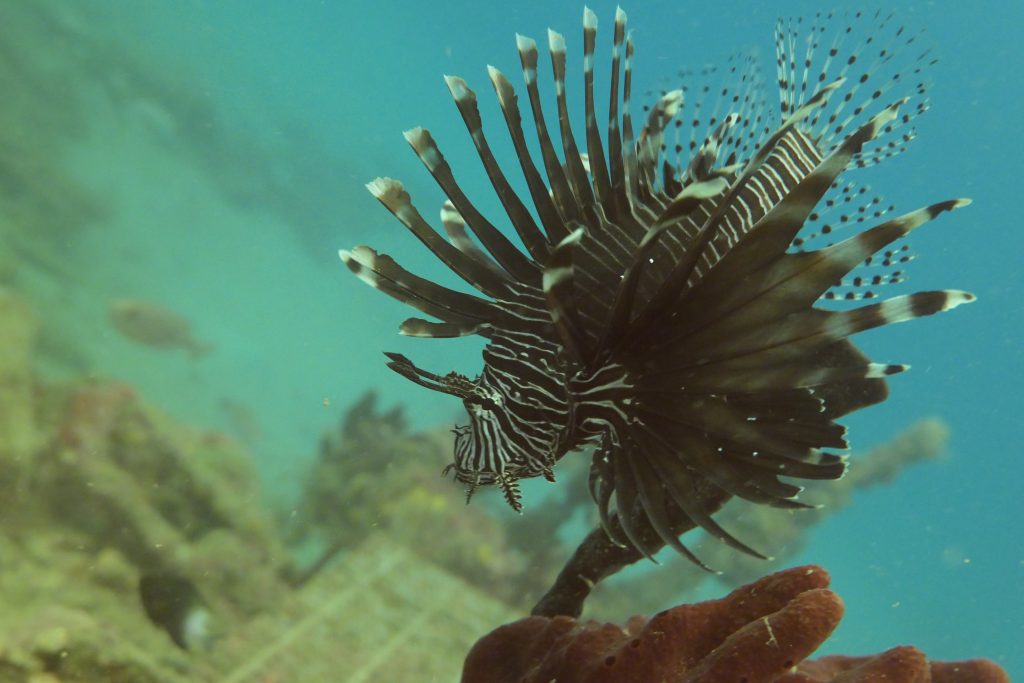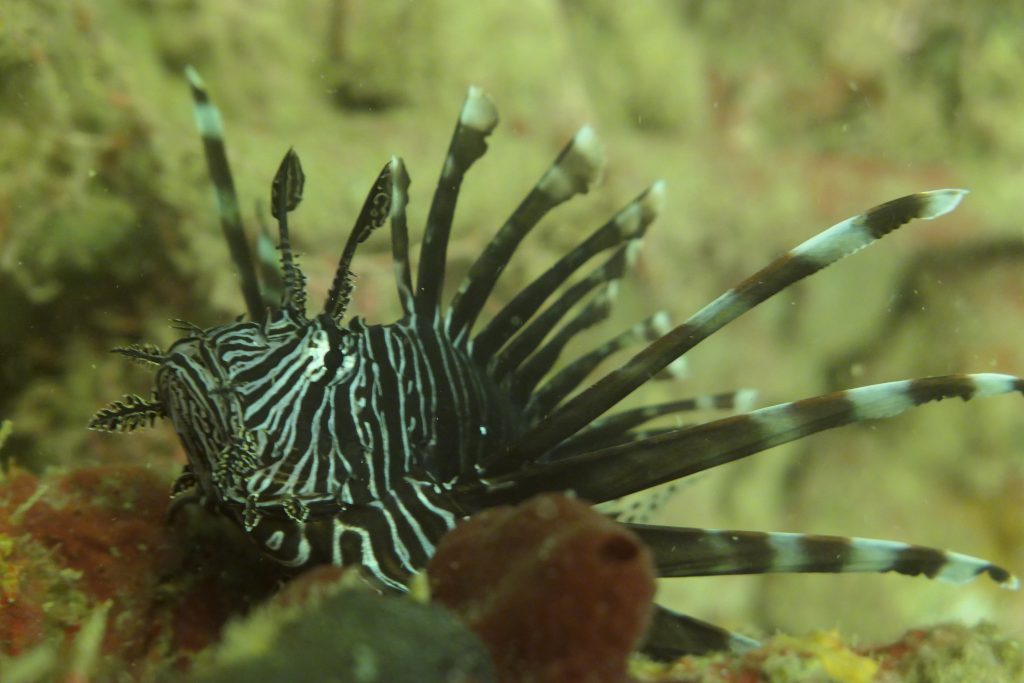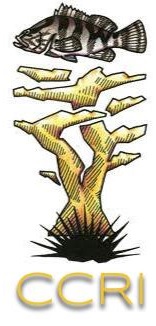
The introduction of invasive species to natural/semi-natural habitats and ecosystems from their native range or from another site of introduction, whether deliberate or accidental, is increasingly seen as a threat to the indigenous biodiversity.
For example, in the Florida Keys in the last decade, at least 8 marine mollusks, 6 crabs, 5 shrimps, 3 barnacles, 4 isopods, and 1 tanaid have been introduced through ship hull fouling or ballast water dumping. In Hawaii, several species of invasive macroalgae have become serious threats to reef health, smothering large areas of coral. Some fish introductions have come from released aquarium fish such as the Indo-Pacific lionfish (Pterois volitans) and the Pacific batfish (Platax orbicularis).
Pacific red lionfish (P. volitans) are voracious predators with poisonous spines that have invaded the Caribbean and are now becoming abundant in PR and USVI waters. Elsewhere, they have severely altered the trophic structure of coral ecosystems, and no effective means of eradication has been demonstrated. Lionfish have been observed from shallow to deep waters with the current record in Puerto Rico being 260 ft at Mona Island, where they were observed by divers and in ROV dives during the recent CCRI Mesophotic Coral Expedition. In the Bahamas, where lionfish are omnipresent, the government is promoting a fishery to help control the invasion.
A number of alien species have also been introduced into Puerto Rico. The non-native clams, southern quahog (Mercenaria campechiensis) and northern quahog (M. mercenaria), have been long established at five localities around Puerto Rico. The Mozambique tilapia, Oreochromis mossambicus (Cichildae), locally dominates in some areas of brackish water. The euryhaline leech, Myzobdella lugubris (Rhynchobdellida: Piscicolidae) was introduced from the continental U.S. to eastern Puerto Rico along with mariculture animals and has since spread to western Puerto Rico. The purple sea man (Drymonema dalmatinum), an introduced jellyfish, experienced a major population explosion in Puerto Rico in 1999 and a minor one in the Virgin Islands in 2003. These outbreaks are not known to have caused much damage, but the potential for greater problems exists. The black striped mussel (Mytilopsis sallei), is an opportunistic mussel species found throughout the Caribbean and has been observed in Puerto Rico. With similar impacts to the zebra mussel, it is a major fouling species, forming dense monocultures which can lead to a substantial reduction in biodiversity.

In 2003, information collated and synthesized on threats posed by invasive species in the Caribbean basin resulted in the compilation of a list of 552 exotics, only 18 of which were marine. The Dominican Republic, Puerto Rico, Bahamas, and Jamaica were among the islands with the greatest number of exotics, naturalized and/or invasive, showing primary impact on the Greater Antilles. There was often difficulty in determining whether newly reported marine species were introduced aliens or merely native species that had formerly gone unobserved. It was concluded that there was a gap in knowledge regarding the status of introduced organisms in the marine environment and the threat that these may constitute. The majority of species encountered were reported to have entered after deliberate or accidental human introduction.
References & more
- Côté I.M., Green S.J., Hixon M.A. (2013) Predatory fish invaders: Insights from Indo-Pacific lionfish in the western Atlantic Caribbean. Biological Conservation 164: 50-61.
- Green S.J., Akins J.L., , Maljkovic A., Côté I.M. (2012) Invasive lionfish drive Atlantic coral reef fish declines. PLoS ONE 7(3): 3pp.
- Schofield P.J. (2009) Geographic Geographic extent and chronology of the invasion of non-native lionfish (Pterois volitans [Linnaeus 1758] and P. miles [Bennett 1828]) in the Western North Atlantic and Caribbean Sea. Aquatic Invasions 4(3): 473-479.
